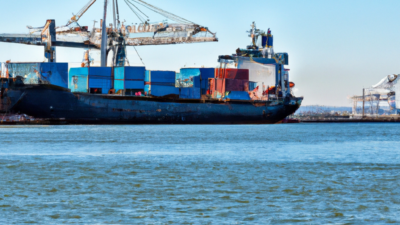Navigating the intricate world of finance often requires a deep understanding of various markets and exchanges. Among these, the commodities exchange holds a unique and vital position, serving as a bustling hub where raw materials and primary agricultural products are traded. From the precious metals that adorn our jewelry to the grains that fill our tables, the commodities exchange is where prices are set, deals are struck, and economic futures are shaped. But where exactly is this pivotal marketplace located? In this article, we will journey through the global landscape to uncover the locations of major commodities exchanges, exploring their significance and the roles they play in the international trading ecosystem. Whether you're an investor, a trader, or simply a curious reader, this exploration will shed light on the geographical heartbeats of the commodities trading world.
Sure, here's a content outline for an article on the topic "Where is the Commodities Exchange Located":
“`html
<!DOCTYPE html>
<html lang="en">
<head>
<meta charset="UTF-8">
<meta name="viewport" content="width=device-width, initial-scale=1.0">
<title>Where is the Commodities Exchange Located</title>
<style>
body {
font-family: Arial, sans-serif;
line-height: 1.6;
margin: 20px;
}
h1, h2, h3 {
color: #333;
}
p {
margin-bottom: 1em;
}
</style>
</head>
<body>
<h1>Where is the Commodities Exchange Located</h1>
<p>The commodities exchange plays a crucial role in the global economy by providing a centralized marketplace for the trading of various commodities, such as gold, oil, and agricultural products. Understanding where these exchanges are located can offer valuable insights into their operations and influence.</p>
<h2>Major Commodities Exchanges Around the World</h2>
<p>Commodities exchanges are located in key financial hubs around the world. Here are some of the major ones:</p>
<h3>1. New York Mercantile Exchange (NYMEX)</h3>
<p>Located in New York City, USA, NYMEX is one of the world's largest physical commodity futures exchanges. It primarily deals with energy products such as crude oil and natural gas.</p>
<h3>2. Chicago Mercantile Exchange (CME)</h3>
<p>Also based in the United States, the CME Group is headquartered in Chicago, Illinois. It is known for trading futures and options in various sectors, including agriculture and financial instruments.</p>
<h3>3. London Metal Exchange (LME)</h3>
<p>The LME is located in London, UK. It specializes in trading non-ferrous metals such as aluminum, copper, and zinc. The exchange is renowned for its global benchmark prices.</p>
<h3>4. Tokyo Commodity Exchange (TOCOM)</h3>
<p>TOCOM is situated in Tokyo, Japan. It focuses on a range of commodities, including precious metals, oil, and rubber. TOCOM is a key player in the Asian commodities market.</p>
<h3>5. Shanghai Futures Exchange (SHFE)</h3>
<p>Located in Shanghai, China, SHFE is one of the major futures exchanges in Asia. It deals with a variety of commodities, including metals, energy, and plastics.</p>
<h2>Importance of Location</h2>
<p>The geographic location of a commodities exchange can influence its trading hours, regulatory environment, and the types of commodities that are most actively traded. For instance, exchanges in the United States and Europe often see higher volumes in energy and metal commodities, while Asian exchanges may focus more on agricultural products and regional commodities.</p>
<h2>Conclusion</h2>
<p>Understanding where commodities exchanges are located helps in appreciating their role in global trade and their impact on the economies they serve. These exchanges provide a vital function in price discovery, risk management, and liquidity provision for various commodities.</p>
</body>
</html>
“`













